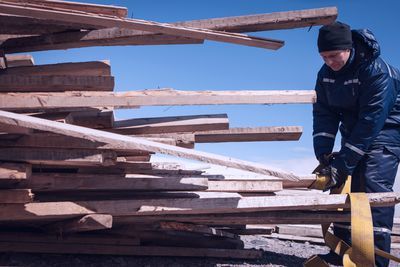Here is what you need to know about the importance of workwear.
Certain aspects of workwear can often be overlooked. For example, is it fitting for the work at hand? Does it offer any additional benefits to the wearers? Is it comfortable and clean? Does it reflect the brand or company image positively?
To get some perspective on these questions, let’s take a look at some of the history of workwear, for example, in factories.
Hardy workwear – the image of the blue collar
Today the term ‘blue collar’ doesn’t just refer to clothing anymore. Instead it refers to a particular line of work – the skilled labour force, such as in industrial settings. This comes from a deeply rooted image that has lasted over time, long after workwear developed into more modern varieties. The shirt collars of many workers were not white, but they were often blue.
Unlike the clean and crisp white shirts typical of office jobs, factory workers wore blue cotton shirts dyed with indigo ink. These shirts helped conceal some of the results of a hard and physical workday, like sweat or grease. Today this image remains as a nearly universal symbol of skilled workers.

Getting it right – functional and eye-catching
Today’s work garments have big expectations to live up to. As discussed, historically the function came first. But nowadays, both the function and look are very important.
Workwear has a job to do, protect the body, be resistant to chemicals or heat, and so forth. It also needs fit well and not constrict the wearer, this allows greater movement to benefit work. Also, notice that ‘fits well’ is different from ‘loose’, because in factory environments, clothing that is too loose may actually be dangerous. Excess fabric can be caught on sharp edges and worse, can be engulfed by moving parts on a machine.
Yet, on the other hand, it has to still look good. Companies around the world are more brand conscious. This works on an internal and external level. Outsiders should see the brand reflected also on the bodies of the workers through their clothing and accessories. Additionally, employees themselves should have pride in their work and their workwear.
Did you know you can also rent your workwear?
Now you’ve seen some reasons to take a closer look at your workwear. What about where to source it? There are advantages and disadvantages in both buying or renting workwear. Here are a few benefits to consider:
1. Flexibility. Renting workwear allows you to flexibly serve your workforce without worrying about having every size and type needed in stock, and on site.
2. Safety compliance. Comfortable employees are happy employees. The same goes for safety. Suitable workwear that fulfils regulations also give employees safe functionality that they need on the job.
3. Technological advances. No need to dust off workwear from the furthest shelf. You can get modern workwear as agreed that uses the practical materials and have features that benefit your workers in their industry.
So, what do you think: does your workwear still live up to your expectations? Could renting be right for your business? Don’t hesitate to ask, we’re happy to help you!


